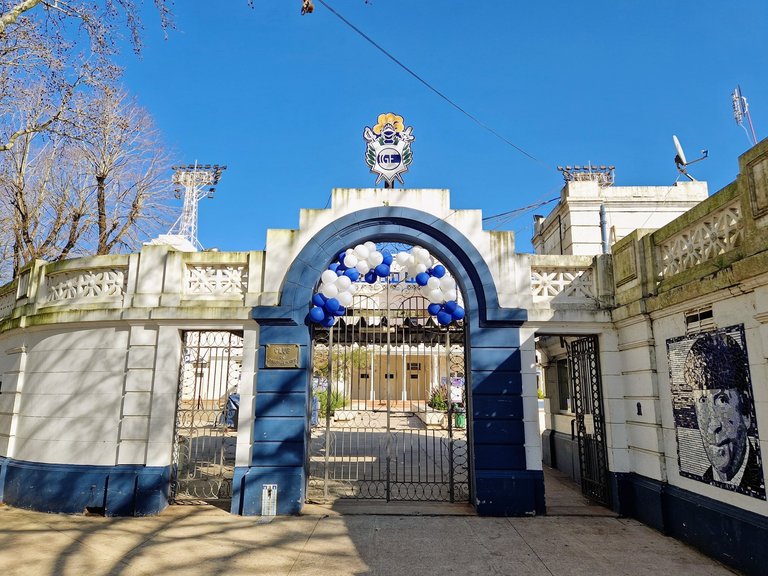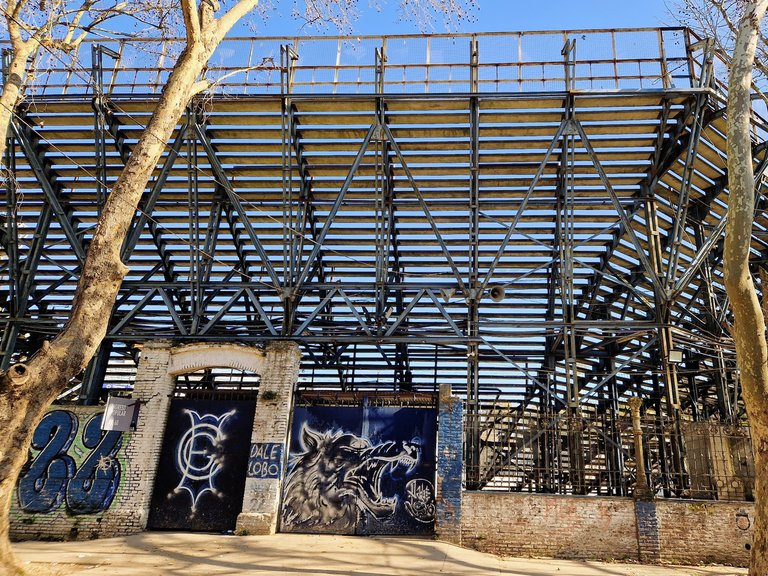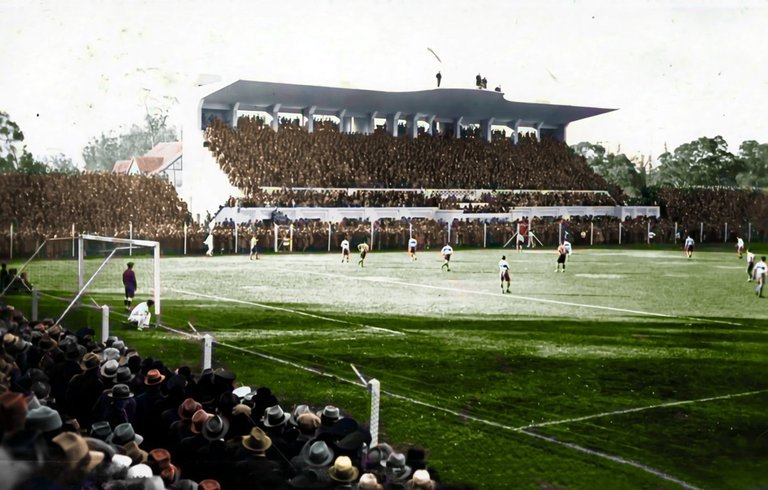1 y 47 - La Plata (SPA -ENG)

La ciudad de La Plata es una urbe pujante y moderna que hace las veces de capital de la provincia de Buenos Aires, sede de su gobierno y otras importantes dependencias administrativas.
Quizás en estos momentos estoy aportando algo de confusión para quienes no son argentinos o no conocen su historia. El motivo del embrollo proviene del nombre de esa que es la principal provincia del estado argentino y el nombre de la ciudad capital de la República que es el mismo. Parece que los fundadores de la patria no tuvieron la mejor idea en aquel momento o no les pareció importante. Quizás advertidos de la confusión de nombres, en los últimos años a la ciudad capital se la comenzó a denominar CABA que no es otra cosa que las siglas de Ciudad Autónoma de Buenos Aires dado el hecho que no pertenece a la provincia homónima sino que posee su propio gobierno y demás dependencias administrativas por su función de capital del estado nacional.
Como sea, La Plata es una ciudad que se fundó en el año 1882 para ser la capital de la provincia de Buenos Aires, gracias a una decisión del gobernador, por aquel entonces Dardo Rocha. Se encargó la planificación y el diseño de la misma al ingeniero Pedro Berniot, que presentó un plano simétrico que incluye un cuadrado perfecto con avenidas y diagonales y un área verde cada pocas cuadras. Un diseño que asombró a propios y extraños, acostumbrados a ciudades caóticas armadas de cualquier manera y al capricho de los habitantes.

A las calles no se les puso nombre sino números y de allí el título de este artículo. 1 y 47 es un lugar exacto en el mapa de la ciudad donde convergen la avenida 1 y la calle número 47, al borde de lo que hoy en día es el centro universitario más importante de la provincia, allí se encuentran la facultad de ingeniería, la de ciencias exactas, la de arquitectura y urbanismo y la de odontología entre otras.
En ese preciso lugar jugó sus primeros años el equipo de fútbol de Gimnasia y Esgrima, era por aquellos años la Plaza de Juegos Atléticos de la ciudad y fue utilizada por el club de mis anhelos por algunos años, desde sus inicios como asociación civil en el año 1887 y hasta 1905 cuando debió abandonarla pero no sin antes propinarle la mayor goleada jamás registrada por River Plate, fue 10 a 1 en favor del "lobo" platense que en ese entonces aun no recibía tal apodo. Aquel año 1905 fue el primero en que el club participó en los torneos oficiales organizados por la Argentine Football Association, una de las entidades precursoras de la actual AFA. Como mencioné anteriormente, ese fue el debut de Gimnasia en un torneo oficial y no le fue para nada mal, finalizó en cuarto lugar obteniendo además de esa goleada otra por 8 a 0 frente a General Belgrano "A", un club que no existe en la actualidad.

Luego de algunos pocos encuentros, Gimnasia debió mudarse a las instalaciones del club Friends cuyo campo de juego se encontraba en las calles 51 y 20, allí finalizó su primer año en la incipiente liga de fútbol argentino. Por alguna razón escondida entre los pliegues del tiempo, Gimnasia abandonó la práctica del fútbol para concentrarse en sus actividades principales: la esgrima, la gimnasia, el tiro con arco y el criquet. Esa actitud de la comisión directiva motivó que algunos socios molestos con la decisión decidieran abandonar el club para fundar Estudiantes de la Plata, cuya finalidad principal y exclusiva fue el fútbol. Recién para 1914 Gimnasia recuperó la idea de volver a competir en este deporte que poco a poco se estaba convirtiendo en la pasión de todos los argentinos.
En 1915, el poeta y escritor Delfor Mendez compuso el himno del club que fue cantado por primera vez en el agasajo que se le hizo al club River Plate Football Club de Montevideo, Uruguay, con motivo de una visita para disputar un encuentro internacional y estrechar lazos de amistad.
En 1916 se disputó en el estadio ubicado en 1 y 57, a pocas cuadras del primer campo de juego que utilizó Gimnasia en un torneo, el partido oficial inaugural de una rivalidad que ya lleva casi 110 años de historia, nos enfrentamos a Estudiantes de la Plata y ganamos 1 a 0. Ese año Gimnasia vuelve a terminar en cuarto lugar en el torneo por detrás de Racing Club de Avellaneda, Platense y River Plate.

La historia continuó y Gimnasia finalmente construyó su propio estadio con tribunas de tablones de madera en 60 y 118. Fue en el año 1924. Hoy, más de 100 años después de aquel hito, el bautizado como Juan Carmelo Zerillo en homenaje a uno de los principales impulsores de su construcción, continúa siendo el estadio oficial, ahora totalmente renovado con tribunas de cemento y dos sectores de plateas enfrentadas y techadas. Se encuentra en medio del bosque platense, un enorme parque, lleno de senderos y zonas para el esparcimiento rodeado de añosos árboles y vegetación exuberante, un lugar ideal que elegiría un lobo para campar a sus anchas.
1 and 47 - La Plata
The city of La Plata is a thriving, modern city that serves as the capital of the province of Buenos Aires, the seat of its government, and the location of other important administrative offices.
Perhaps I'm causing some confusion for those who aren't Argentinian or don't know its history. The reason for the confusion stems from the name of the main province of the Argentine state and the name of the capital city of the Republic, which is the same. It seems that the founders of the nation didn't have the best idea at the time, or didn't think it was important. Perhaps aware of the confusion, in recent years the capital city has begun to be called CABA, which is nothing more than the acronym for the Autonomous City of Buenos Aires, given the fact that it doesn't belong to the province of the same name but rather has its own government and other administrative offices, as its function is to be the capital of the national state.
Anyway, La Plata was founded in 1882 to be the capital of the province of Buenos Aires, thanks to a decision by the governor, Dardo Rocha at the time. Engineer Pedro Berniot was entrusted with its planning and design, and he presented a symmetrical plan that included a perfect square with avenues and diagonals and a green area every few blocks. A design that amazed locals and visitors alike, accustomed to chaotic cities assembled haphazardly and at the whim of their inhabitants.
The streets were not given names but numbers, hence the title of this article. 1st and 47th Street is the exact location on the city map where 1st Avenue and 47th Street meet, on the edge of what is now the province's most important university. The Faculty of Engineering, the Faculty of Exact Sciences, the Faculty of Architecture and Urban Planning, and the Faculty of Dentistry, among others, are located there.
It was precisely on that spot that the Gimnasia y Esgrima football team played its early years. Back then, it was the city's Athletics Arena, and it was used by the club of my dreams for several years, from its beginnings as a civic association in 1887 until 1905, when it had to abandon the site, but not before inflicting the biggest defeat ever recorded by River Plate: 10-1 in favor of the "wolf" from La Plata, who at that time had not yet received that nickname. That year, 1905, was the first in which the club participated in official tournaments organized by the Argentine Football Association, one of the precursors to the current AFA. As I mentioned earlier, that was Gimnasia's debut in an official tournament, and they did quite well. They finished in fourth place, in addition to that defeat, and also earned an 8-0 victory over General Belgrano "A," a club that no longer exists today.
After a few matches, Gimnasia had to move to the Friends club's facilities, whose playing field was located at 51st and 20th Streets. There, it finished its first year in the fledgling Argentine soccer league. For some reason, hidden in the folds of time, Gimnasia abandoned soccer to concentrate on its main activities: fencing, gymnastics, archery, and cricket. This attitude of the board of directors motivated some members, displeased with the decision, to leave the club and found Estudiantes de la Plata, whose primary and exclusive purpose was soccer. It wasn't until 1914 that Gimnasia revived the idea of competing again in this sport, which was slowly becoming the passion of all Argentines.
In 1915, poet and writer Delfor Méndez composed the club's anthem, which was first sung at the reception given to River Plate Football Club of Montevideo, Uruguay, for a visit to play an international match and strengthen ties of friendship.
In 1916, the official inaugural match of a rivalry that has lasted almost 110 years was played at the stadium located at 1st and 57th Street, just a few blocks from the first pitch Gimnasia used in a tournament. We faced Estudiantes de la Plata and won 1-0. That year, Gimnasia again finished fourth in the tournament behind Racing Club de Avellaneda, Platense, and River Plate.
The story continued, and Gimnasia finally built its own stadium with wooden plank stands at 60 and 118. It was in 1924. Today, more than 100 years after that milestone, the stadium, named Juan Carmelo Zerillo in honor of one of the main driving forces behind its construction, remains the official stadium, now completely renovated with cement stands and two roofed seating areas facing each other. It is situated in the heart of the La Plata forest, a vast park featuring numerous paths and recreational areas, surrounded by ancient trees and lush vegetation, making it an ideal place for a wolf to roam freely.
Héctor Gugliermo
@hosgug
Que bonita historia sobre el origen de la actual federación argentina, de ahí seguro también salieron los orígenes del actual River Plate. Excelente trabajo como siempre amigo @hosgug, saludos